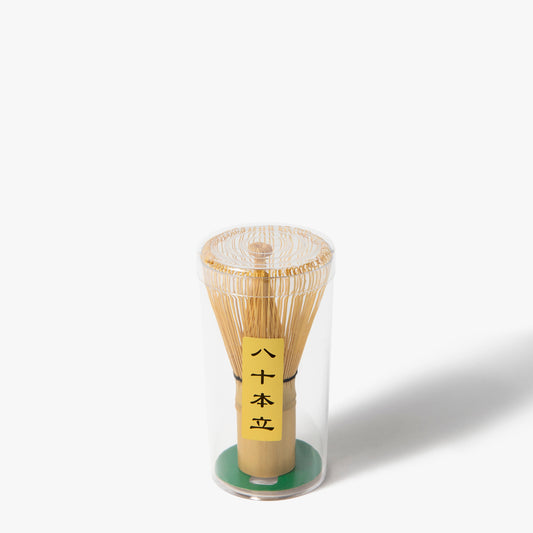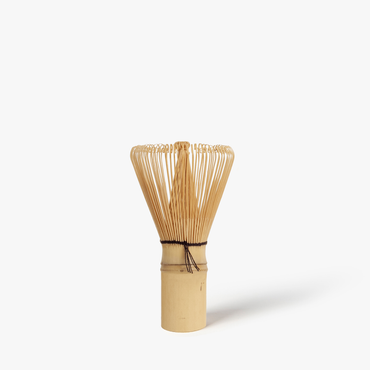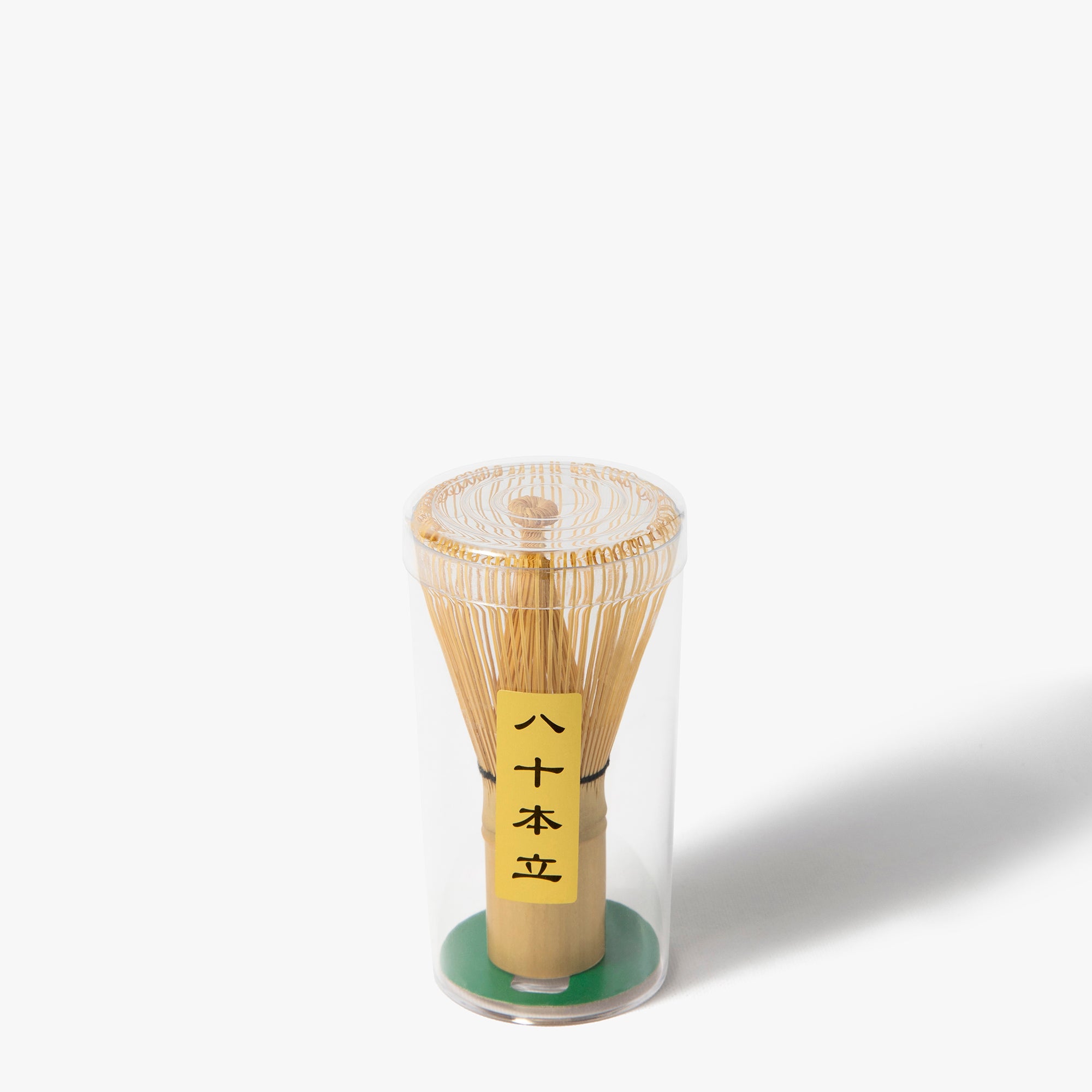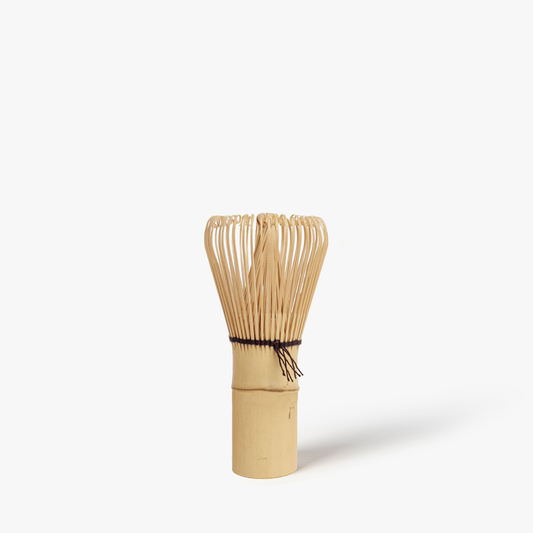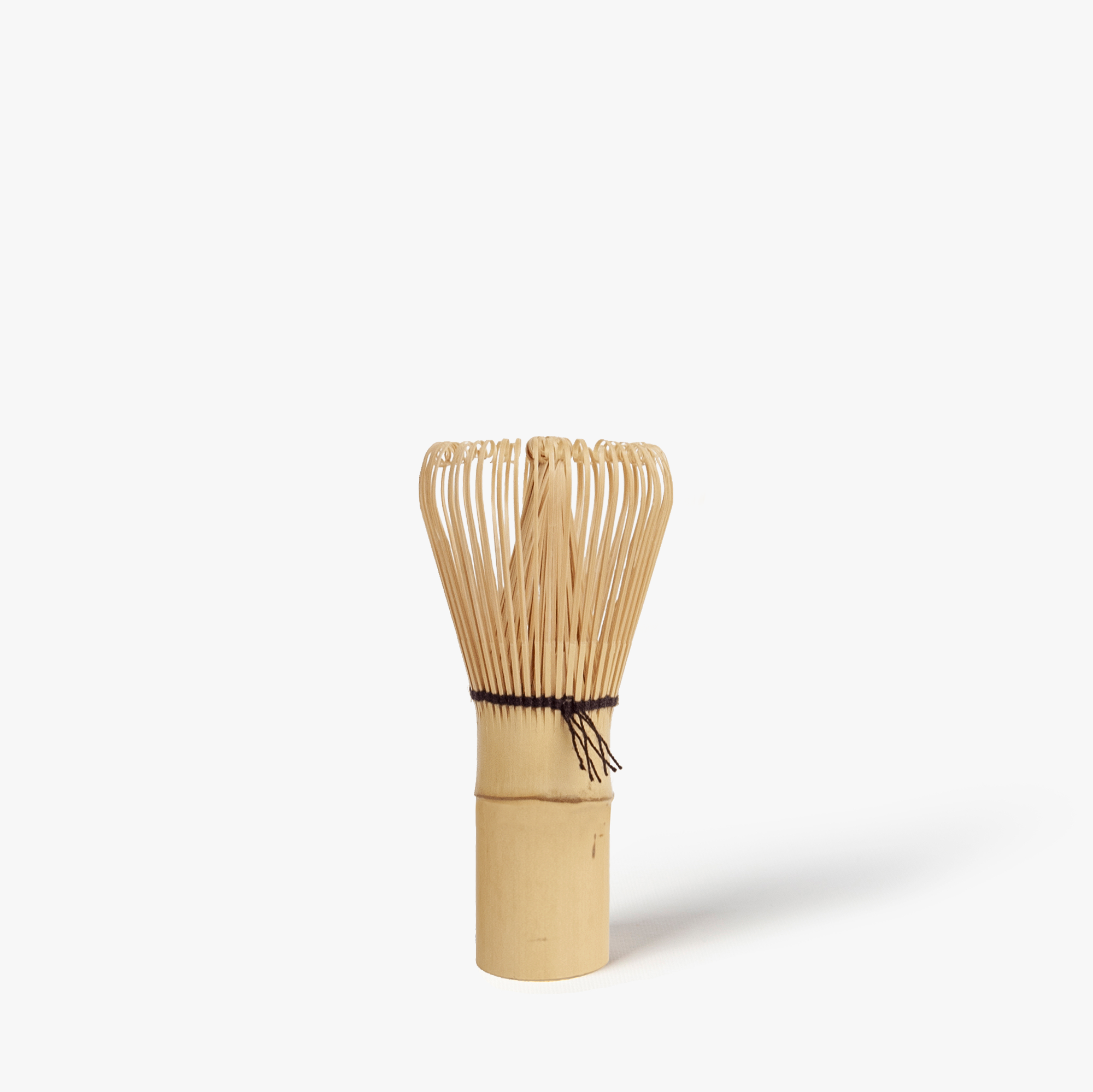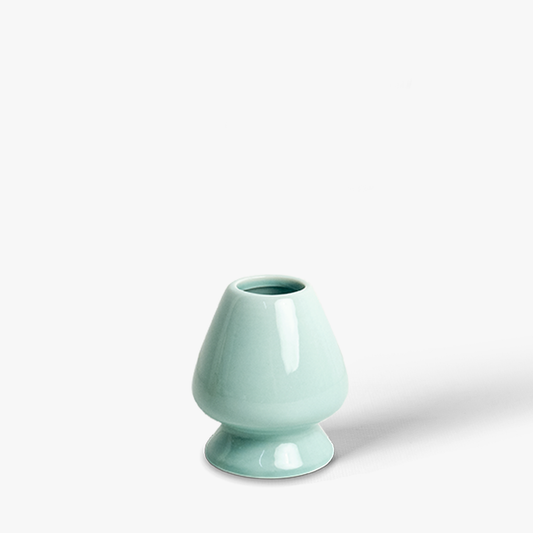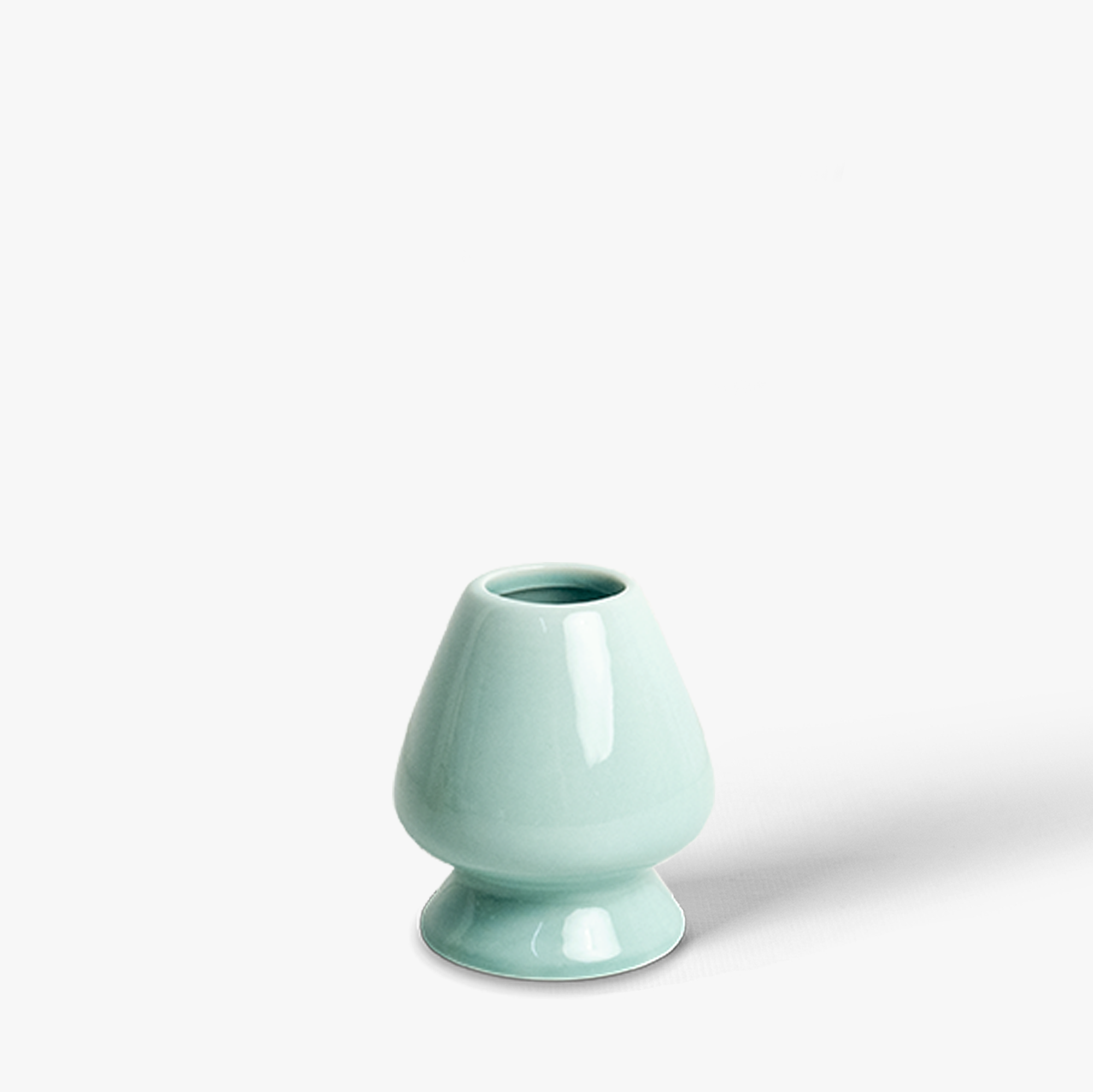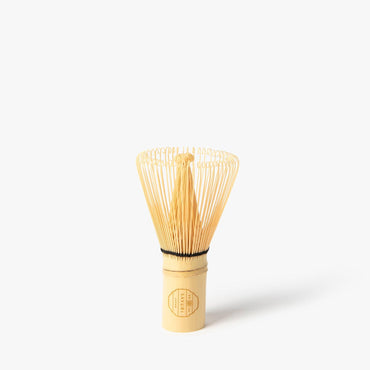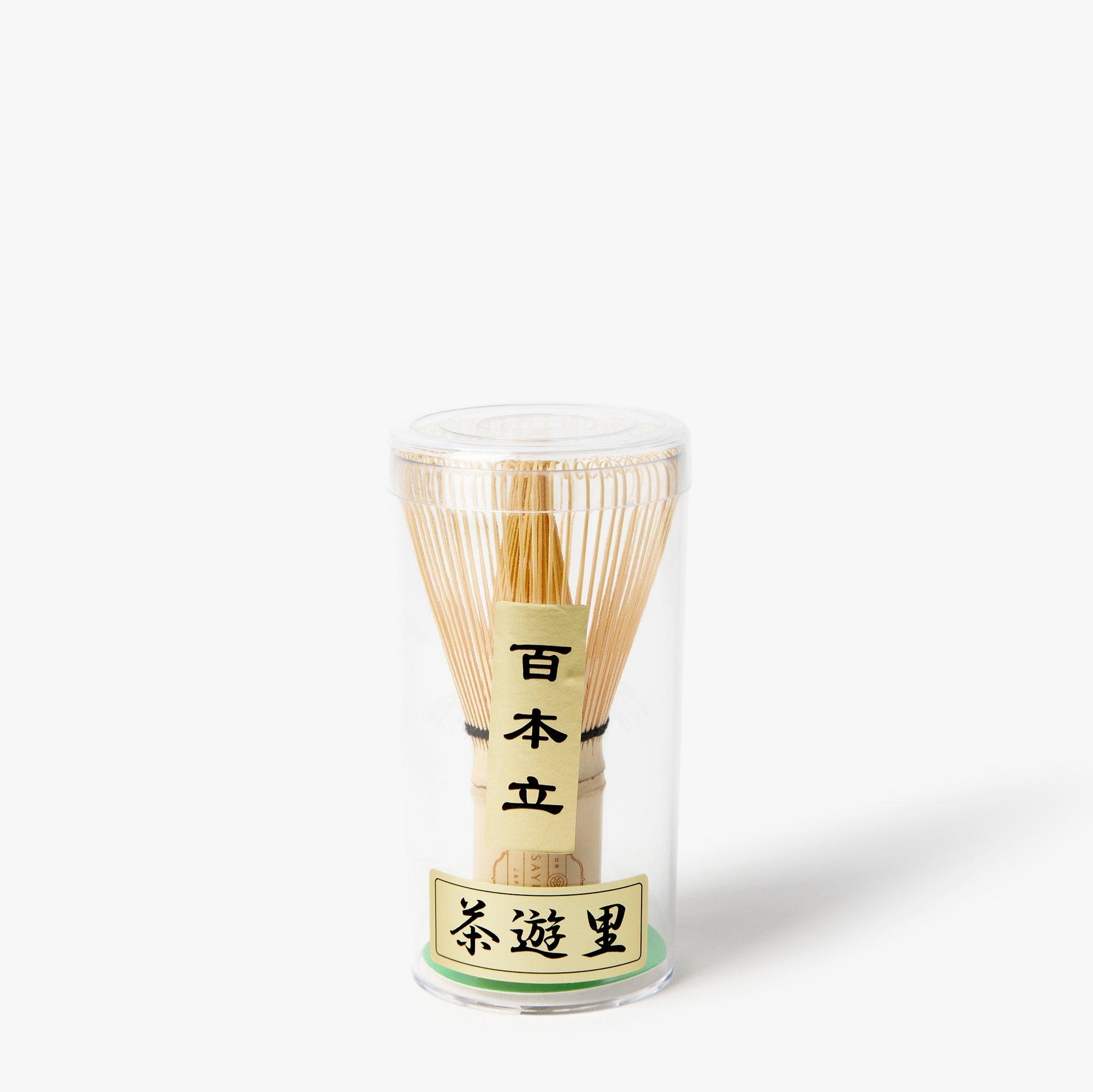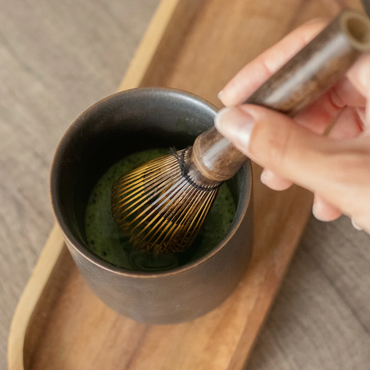
Accessories for preparing matcha
Out of stock & matcha prices
For several months now, we have been experiencing an explosion in worldwide demand for matcha, which has more than tripled, particularly outside Japan. Yet Japanese production, driven by small family farms, is unable to keep pace. As a result, purchase prices from our producers have doubled in the space of a year.
We have always chosen to limit the impact of this increase on our sales prices, by absorbing part of the costs. However, in order to continue offering a quality matcha, we are now forced to adjust our prices by a few euros.
Despite our efforts, we only manage to cover around 20% of actual demand in stores and online. Supply remains very tight. To make sure you don't miss your favorite matcha, we recommend that you sign up for e-mail alerts on the product pages This will keep you informed in real time as soon as a restocking is available.
The good news is that we're continually expanding our range, with over thirty matcha references, from the finest vintages to culinary uses, so that everyone can find the matcha that's right for them.
Find out more about matcha
Why is matcha often out of stock?
Our aim is to offer you an exceptional matcha, while respecting the know-how of our producers. The latter are often small Japanese companies that perpetuate traditional methods, with limited harvests to guarantee optimum quality. The production of high-quality matcha also follows a slow, inflexible process. For example, a traditional stone millstone only produces around 40g of matcha per hour. Specialized equipment is rare, which limits production speed.
Faced with growing demand and limited production volumes, some products may be out of stock, despite our best efforts to restock. To make sure you don't miss your favorite matcha, we recommend that you sign up for e-mail alerts on the product pages This will keep you informed in real time as soon as a restocking is available.
What are the benefits of matcha?
Matcha, Japanese green tea powder, is much more than just a drink: it's a superfood with multiple benefits for both body and mind. Used for centuries in the Japanese tea ceremony, it is now recognized the world over for its exceptional health benefits. Here are the main benefits of matcha, validated by science and tradition.
1. An exceptional source of antioxidants
Matcha is extremely rich in catechins, particularly EGCG (epigallocatechin gallate), an antioxidant renowned for its protective effects against cell aging, chronic inflammation and certain cardiovascular diseases. On a weight-for-weight basis, matcha contains up to 137 times more antioxidants than conventional brewed green tea.
2. Stable energy, without nervousness
Unlike coffee, matcha's caffeine is released slowly into the body, thanks to the presence of L-theanine, a rare amino acid. The result: a long-lasting stimulating effect, with no nervous peaks or fatigue. Matcha is often recommended to improve concentration and mental stamina, without the side effects of coffee.
3. Improved concentration and mental clarity
The unique combination of caffeine and L-theanine promotes a state of relaxed alertness, much sought-after in meditative practices. Studies have shown that this synergy improves memory, concentration and reaction time. It's the perfect ally for those seeking a natural cognitive boost.
4. Support for metabolism and weight loss
Matcha naturally stimulates metabolism, promoting fat burning during physical activity. Some research suggests that it may increase fat oxidation and improve sports performance when consumed before exercise.
5. Strengthening the immune system
Rich in antioxidants, vitamins (A, C, E) and minerals (potassium, calcium, zinc), matcha supports the body's natural defenses. It also possesses antibacterial and antiviral properties, making it an interesting support during seasonal changes.
6. Natural detoxification
Matcha is grown in the shade, which increases its chlorophyll content, a powerful natural detoxifier. Chlorophyll helps eliminate heavy metals and toxins from the body, while promoting clearer skin and a more radiant complexion.
What are the different types of matcha?
Matcha, Japan's emblematic green tea powder, comes in a variety of qualities and uses. Depending on where it comes from, how it's grown, harvested and ground, it can vary greatly in taste, texture and color. To choose the right matcha, it's essential to understand the different types available on the market.
1. Matcha ceremonial (Ceremonial grade)
This type of matcha is considered the noblest. It is intended to be consumed pure, whipped with hot water (according to the rules of the Japanese tea ceremony).
- Origin: first-harvest leaves from the most tender buds.
- Taste: mild, intense umami, no bitterness.
- Color: bright, vivid green.
- Use: usucha (light tea) or koicha (thick tea), with no added milk or sugar.
Ideal for demanding enthusiasts, ritualists or those who want to enjoy matcha in its purest form.
2. Matcha premium / superior
This high-quality matcha can also be enjoyed neat, but is sometimes used in drinks such as matcha lattes, especially when a fine, balanced taste is desired.
- Origin: first or second harvests, young but slightly more mature leaves.
- Taste: balanced, slightly herbaceous, umami notes.
- Color: bright green to light green.
- Use: drink neat or as a latte with vegetable or animal milk.
Perfect for everyday use, for those looking for a good compromise between quality and affordability.
3. Culinary Matcha (Culinary grade)
Specially designed for use in cooking and baking, this matcha is more robust to withstand heat and other ingredients.
- Origin: more mature leaves, later harvests.
- Taste: more herbal, sometimes bitter, but remains present even when mixed.
- Color: duller green, sometimes slightly yellow.
- Use: pastries, ice creams, sauces, smoothies, sweet drinks.
Ideal for chefs, craftsmen and culinary creations, where the matcha taste must remain perceptible despite the other ingredients.
What justifies the price of matcha?
Matcha is often perceived as rather expensive. This price is not arbitrary: it reflects a unique combination of ancestral know-how, exacting production techniques and exceptional raw material quality. Here's what really justifies the price of matcha.
1. A very specific tea culture
Matcha is produced from tencha leaves, a type of green tea grown in the shade for several weeks before harvesting. This technique, known as shading (kabuse), increases chlorophyll, L-theanine (a relaxing amino acid) and antioxidant content.
This method requires special nets, more manpower and reduces plant productivity: fewer leaves are obtained , but of better quality.
2. Fine, hand-picked harvesting
Premium matcha is harvested by hand, selecting only the youngest spring leaves. Unlike industrial tea, no machines are involved in this delicate process. The result is a rich, fine, bitter-free matcha... produced in very small quantities.
3. Slow grinding on a stone millstone
Grinding matcha is an extremely slow process: a single traditional millstone can produce around 30 to 40g of matcha per hour. This artisanal pace preserves the powder's nutritional properties and finesse.
At this level of precision, it is impossible to speed up production without losing quality.
4. Know-how handed down through generations
In Japan, the production of exceptional matcha relies on master blenders and specialized producers, some of whom have been established in the same regions for centuries (such as Uji, Nishio or Shizuoka).
Their know-how is the fruit of long years of apprenticeship and guarantees a subtle balance between plant sweetness, umami and silky texture.
5. Limited volumes, global demand
Global demand for matcha has exploded in recent years, thanks in particular to its health benefits and its use in cooking. However, artisanal production cannot be increased at the same rate.
As a result, supply remains limited, which naturally increases prices, especially for the higher grades.
Buying a good matcha means investing in quality, taste and respect for centuries-old Japanese traditions. It also means choosing a rare product, grown with care and without compromise.
Does matcha contain caffeine?
Yes, matcha contains caffeine - even more than most classic green teas. But unlike coffee, matcha's caffeine is absorbed more slowly by the body, thanks to its richness in L-theanine, an amino acid with relaxing effects. This unique duo provides smooth, long-lasting energy, without the jittery, crashing effects associated with coffee.
On average, 1 gram of matcha contains between 30 and 35 mg of caffeine. A traditional bowl of matcha (around 2g) therefore contains 60 to 70 mg of caffeine - slightly less than an espresso (around 80-100 mg), but with a very different effect.
Average caffeine content :
- Matcha (2g): 60 to 70 mg
- Classic green tea: 20 to 30 mg
- Espresso coffee: 80 to 100 mg
- Filter coffee: 100 to 140 mg
Thanks to L-theanine, matcha's caffeine acts more gradually, without causing agitation, and over several hours.
This is why matcha has been used for centuries by Japanese Buddhist monks to stay awake and focused during long meditation sessions.
Why shouldn't you use boiling water to prepare your matcha?
Using boiling water to prepare matcha is a common mistake that can profoundly alter the taste and benefits of this exceptional tea powder. That's why it's essential to respect an ideal water temperature - generally between 70°C and 80°C - when preparing matcha.
1. Preserving matcha's delicate aromas
Matcha is a finely ground green tea made from the finest tencha tea leaves. It is characterized by vegetal, sweet and umami notes. Water too hot (over 85°C) burns these volatile aromatic compounds, giving a bitter, astringent and unbalanced result.
2. Respecting amino acid structure
One of matcha's major components is L-theanine, an amino acid responsible for its umami taste and soothing effects. Too high a temperature can degrade L-theanine, reducing its relaxing effect.
3. Preserve antioxidant properties
Matcha is renowned for its exceptional antioxidant content, particularly catechins. These molecules are sensitive to excessive heat: boiling water can alter their effectiveness, diminishing the health benefits of matcha.
4. Avoid excessive bitterness
If the water is too hot, the tannins are rapidly extracted, which accentuates the bitterness of the matcha. A quality matcha deserves to be tasted in all its subtlety, with a soft roundness in the mouth and a fine creaminess.
Why is a matcha bowl (chawan) preferable to a classic bowl?
A matcha bowl(chawan) is preferable to a traditional bowl for a number of practical, aesthetic and cultural reasons:
1.Shape adapted to the whisk (chasen)
The matcha bowl is wide and fairly deep, allowing the chasen (bamboo whisk) to be used optimally without splashing.
Its base is generally stable, facilitating the rapid circular movement needed to froth the matcha.
2.Thickness and material
The chawan is often made of thick ceramic, which retains heat well without burning the hands.
This thickness also makes for a comfortable grip when tasting.
3.Aesthetics and experience
The chawan is an integral part of the matcha experience. It is often shaped by hand and chosen according to the season or occasion, adding a contemplative and aesthetic dimension.
Each bowl is unique and contributes to the visual and tactile appreciation of the moment.
4.Makes dosing easier
The flat or slightly rounded bottom of the chawan allows the matcha powder and water to be evenly distributed, making the mixture more homogeneous than with a bowl with straight sides.
How to maintain your bamboo chasen?
🌿 Before use
Soak the strands in a bowl of hot water for 30 seconds to 1 minute. This softens them and reduces the risk of breakage when whipping.
Avoid boiling water, which could split the bamboo.
🍵 After use
Rinse with clean water (no soap, as this could impregnate it with odors and aromas). Soaking in hot (not boiling) water is more than enough to soften the strands and extend the life of the utensil.
Remove any matcha residue by shaking lightly or gently running your finger between the strands.
Dry in the open air, ideally upside down on a kusenaoshi (chasen stand), so that it retains its shape and water doesn't stagnate in the bamboo.
Avoid damp or confined spaces to prevent mildew.
⚠️ Absolutely avoid.
- The dishwasher
- Soap
- Drying in a closed cupboard
- Hot water left too long, which can split bamboo

























